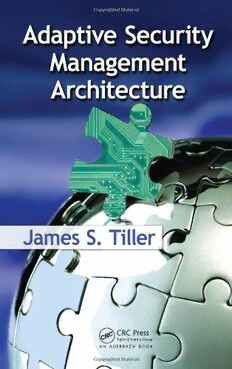
Adaptive Security Management Architecture PDF
484 Pages·2010·2.988 MB·English
Most books are stored in the elastic cloud where traffic is expensive. For this reason, we have a limit on daily download.
Preview Adaptive Security Management Architecture
Description:
For an organization to function effectively, its security controls must not be so restrictive that the business is denied the ability to be innovative and flexible. But increasingly pervasive threats mandate vigilance in unlikely areas. Adaptive Security Management Architecture enables security professionals to structure the best program designed to meet the complex needs of an entire organization, taking into account the organization’s business goals as well as the surrounding controls, processes, and units already in existence. Security aligned with business needs Introducing the concept of Adaptive Security Management Architecture (ASMA), the book explains how an organization can develop an adaptive security program closely aligned to business needs, making it an enabling force that helps the organization achieve its goals and objectives. Describing how to achieve this adaptability, the book cites several examples and concepts to demonstrate aspects of managing change. It presents the end product of a successful security management system and examines the finer points of how it can be accomplished. Risk management and governance The book explores the security and business attributes that must be considered in the development of services and discusses the importance of consistency of management of services. In a section on risk management, the author explains how this important component is directly integrated with the ASMA model. He also discusses the critical element of governance and its importance to demonstrating value and ensuring effective adaptation. Lastly, the book examines how proper organizational management can give the executive and leadership team the necessary oversight to ensure the entire security program meets stated expectations. It also describes the capability maturity model, which ensures that all the co-dependent features of the program are managed with a common approach, thus ensuring that the organization and its security program function as a unified, cohesive system.
See more
The list of books you might like
Most books are stored in the elastic cloud where traffic is expensive. For this reason, we have a limit on daily download.
